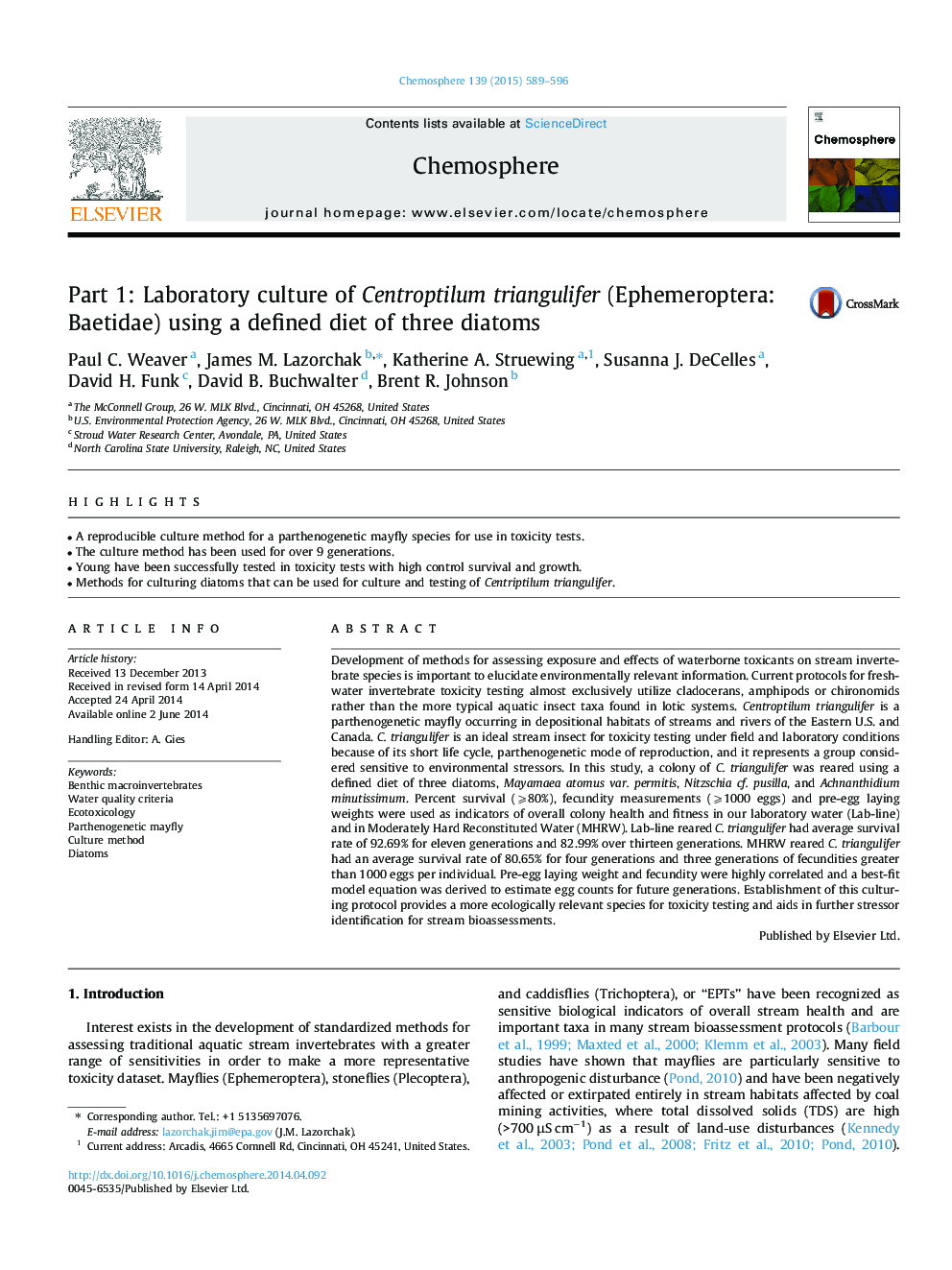| کد مقاله | کد نشریه | سال انتشار | مقاله انگلیسی | نسخه تمام متن |
|---|---|---|---|---|
| 4408196 | 1618832 | 2015 | 8 صفحه PDF | دانلود رایگان |

• A reproducible culture method for a parthenogenetic mayfly species for use in toxicity tests.
• The culture method has been used for over 9 generations.
• Young have been successfully tested in toxicity tests with high control survival and growth.
• Methods for culturing diatoms that can be used for culture and testing of Centriptilum triangulifer.
Development of methods for assessing exposure and effects of waterborne toxicants on stream invertebrate species is important to elucidate environmentally relevant information. Current protocols for freshwater invertebrate toxicity testing almost exclusively utilize cladocerans, amphipods or chironomids rather than the more typical aquatic insect taxa found in lotic systems. Centroptilum triangulifer is a parthenogenetic mayfly occurring in depositional habitats of streams and rivers of the Eastern U.S. and Canada. C. triangulifer is an ideal stream insect for toxicity testing under field and laboratory conditions because of its short life cycle, parthenogenetic mode of reproduction, and it represents a group considered sensitive to environmental stressors. In this study, a colony of C. triangulifer was reared using a defined diet of three diatoms, Mayamaea atomus var. permitis, Nitzschia cf. pusilla, and Achnanthidium minutissimum. Percent survival (⩾80%), fecundity measurements (⩾1000 eggs) and pre-egg laying weights were used as indicators of overall colony health and fitness in our laboratory water (Lab-line) and in Moderately Hard Reconstituted Water (MHRW). Lab-line reared C. triangulifer had average survival rate of 92.69% for eleven generations and 82.99% over thirteen generations. MHRW reared C. triangulifer had an average survival rate of 80.65% for four generations and three generations of fecundities greater than 1000 eggs per individual. Pre-egg laying weight and fecundity were highly correlated and a best-fit model equation was derived to estimate egg counts for future generations. Establishment of this culturing protocol provides a more ecologically relevant species for toxicity testing and aids in further stressor identification for stream bioassessments.
Journal: Chemosphere - Volume 139, November 2015, Pages 589–596